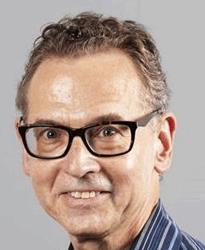Breakthrough Therapy Designation Helps Genentech Navigate Difficult Trials

By Ed Miseta, Chief Editor, Clinical Leader

FDA started the Breakthrough Therapy Designation program in 2012. Since then, Genentech has garnered 15 designations, more than any other company. Jeffrey Siegel has been an instrumental component of that success. Siegel is Genentech’s senior group medical director and spent 14 years with FDA prior to joining the company. He has spent most of his career in pharma developing products to address the unmet medical needs of patients.
In this Q&A, Siegel discusses Breakthrough Therapy Designation, the Orphan Drug Act, and the challenges of operating in the rare disease space.
Ed Miseta: You work primarily in the area of immunology. Is that an area where there is still a lot of unmet need?
 Jeffrey Siegel: Unmet need is something that really does depend on the therapeutic area. In immunology, there has been a lot of development in the last 20 years. Many of the more common immunologic diseases now have effective therapies. Where we still see unmet medical need is in the less common, rare disease situations, such as giant cell arteritis and scleroderma, where we have attained breakthrough therapy designation for our product (tocilizumab, or Actemra).
Jeffrey Siegel: Unmet need is something that really does depend on the therapeutic area. In immunology, there has been a lot of development in the last 20 years. Many of the more common immunologic diseases now have effective therapies. Where we still see unmet medical need is in the less common, rare disease situations, such as giant cell arteritis and scleroderma, where we have attained breakthrough therapy designation for our product (tocilizumab, or Actemra).
Still, there are other areas where we haven’t seen much progress over that period of time and where there are still no effective approved therapies. One example is in an area I worked in while at the FDA, which is sepsis. There was a lot of drug development, but in the end nothing panned out. That is a common disease where there is clearly an unmet medical need. I think Alzheimer’s would be another example. We really do not have an effective disease-modifying therapy at this point.
Miseta: Does creating medicines for rare diseases, where there is a smaller patient population, create greater risks for companies?
Siegel: It’s true that many challenges exist. One of them is these drugs typically require a higher price in order to recover the development costs. However, this is one of the reasons FDA has provided additional incentives via the Orphan Drug Act. The program allows for a longer duration of data exclusivity and marketing exclusivity and also tax incentives for companies that develop products in the rare disease space. Because of the Act, there has been a tremendous amount of interest in developing products for rare diseases, and there is a large and thriving market in the rare disease area for products that are truly transformative for patients.
Miseta: Can Breakthrough Therapy Designation provide additional incentives?
Siegel: In the rare disease area, I don’t think Breakthrough Therapy Designation does much to help as an incentive, because the incentives are already there. But what it does do is help facilitate the process. Oftentimes, in rare diseases, you’re dealing with a disease where there is no proven therapy. That means there are no validated endpoints. You want to be able to reach quick agreement with FDA on what the Phase 3 study should look like.
That is where breakthrough therapy designation helps. By getting companies more contact with FDA and having them as a partner in your development process, FDA is able to facilitate the process. But I think that is a little different from providing an increased incentive.
Miseta: In most rare diseases, is it also more difficult to recruit patients?
Siegel: Most of the rare diseases I work in are prevalent throughout the world, but there may be particular populations that tend to get the disease more than others. For example, sickle cell disease clearly affects some demographics more than others.
But many of these diseases are worldwide, and since time is of the essence in clinical drug development, we often run global studies. These studies will include the U.S., Europe, and, sometimes, Latin America and Asia. The goal is to bring more patients into the study as quickly as possible so as to get medicines to patients in a timelier manner.
Miseta: In conducting these trials does Genentech need to bring in experience from outside the company?
Siegel: Most of the experience that goes into getting Breakthrough Therapy Designation comes from in-house. For example, we have a wealth of regulatory expertise in-house, including my experience with FDA. But we did reach outside the company when working with academic investigators. They provided information indicating that tocilizumab had clinical benefits in patients with scleroderma before we began our program. They provided scientific information indicating the mechanism of action of tocilizumab was important in driving disease activity in scleroderma.
Without this preliminary data from the outside academic investigators, it would have been much harder for us to identify scleroderma as a promising indication. Then, in conducting the trial, the experience and advice of the academic collaborators was instrumental to the success of the program.
Miseta: Were it not for the academic investigators, would the cost and time to market be much greater?
Siegel: That’s absolutely correct, and it brings up something else I was hoping to discuss. I work in late-stage clinical development, where we often talk about line extension for our approved products. That was the case with Actemra for scleroderma. In those cases, you have a known time to loss of exclusivity.
We really do need to think about the time to approval and making sure that it’s well in advance of loss of exclusivity. The timing is very important. Doing these studies early and getting information from other sources regarding what may be promising additional indications is really very important here. We often work with academia and that relationship is vital to our clinical development program. Academic investigators often come up with great ideas that we didn’t think about, but are willing to pursue.
One example is Rituxan for Granulomatosis with Polyangiitis. The data for this came out of investigator-sponsored studies, where there were indications Rituxan worked in patients who didn’t respond to the standard of care. Based on that, we collaborated with NIH, the Immune Tolerance Network, and academic investigators to do a study that ultimately led to approval. There are many examples where we received an approval based on original data that came from academic investigators.
Miseta: Patient centricity has become an essential component of any clinical trial. Regarding the scleroderma study you discussed, were any efforts made to incorporate the experience of patients?
Siegel: Connecting with patients to find out what is important to them is something that played an important role in this program, as well as other programs we have. We are concerned about the outcomes of the therapies but also making trial participation easier for patients.
In the scleroderma study, patients will often have a lot of fatigue and difficulty with daily living activities. In many rare disease trials, patients might also have to travel long distances to the study center where they are being assessed. We knew it would be difficult for a scleroderma patient to get up early in the morning, get to the study center by 8:00 a.m., and then spend the day getting their assessments. They informed us that providing assistance with overnight accommodations near the hospital or clinic would be important to them. We were able to make that happen, which removed a huge obstacle in getting them to participate in the trial.
When it came to sending them to different parts of the hospital to get imaging, bloodwork, and pulmonary function tests, we also thought about it and devised a proceedure to make the process more patient-friendly.
